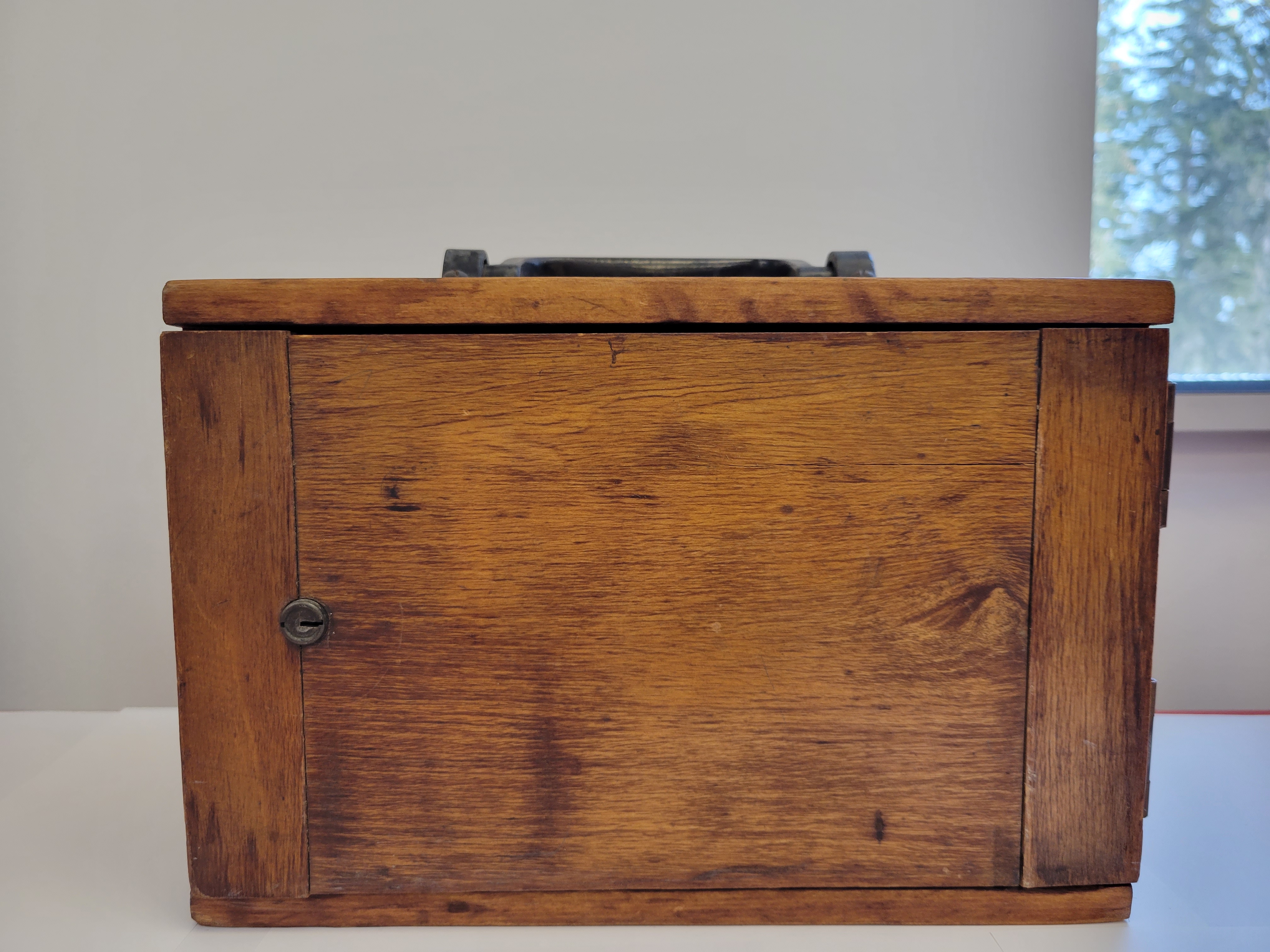

Biology professor Era Scofield discovered this 1910 microtome under the eaves in the attic of Agricultural Hall when it was being torn down in the early 1970s. This device (and more complex versions used today) are used to cut microscopically thin pieces of tissue for processing and study. Microtomes were invented in 1865 by Wilhelm His. Early uses of the device included treating animal flesh to harden it with salts and acids and then slicing it. Observing these samples under a microscope allowed for clearer understanding of the makeup of cells and tissues. The microtome found here and housed in the archives is in a wooden carrying case with an iron handle. When found, it was missing a tray, which Scofield later made to repair the object. Through this object you can see the development of scientific research and understanding from the mid-19th century to contemporary times.
